
EUROPE BETS ON THE DIGITAL NETWORKS OF THE FUTURE
-
“99% of Europe’s intercontinental connectivity relies on submarine cables,” said Agustín Díaz-Pinés, Deputy Head of Future Connectivity Systems, DG CNECT, at the European Commission.
-
Carles Antón-Haro, Board Member of the 6G Industry Association (6G-IA), Chair of the 6G-IA Test Working Group and Director of European Programs and Industry Contracts at the Centre Tecnològic de Telecomunicacions de Catalunya (CTTC), presented the EU-US cooperation strategy for the more sustainable AI-based development of future 6G networks.
-
Elena Puigrefagut, Senior Project Manager at the European Broadcasting Union (EBU), developed all about 5G-EMERGE, “a 5G-based, satellite-centric hybrid network ecosystem optimized for media distribution.”
-
Today, Friday, May 10, the seventh edition of the 5G Forum, focused on the application of this technology to cybersecurity and AI, closes with the last online session.
The 5G Forum 24, “Where 5G leaders meet” held yesterday its fourth day (second virtual) with a top-level agenda that included, among others, representatives of the European Commission, the European Broadcasting Union (EBU) or decision makers on 6G. The day also served to learn first-hand about the global pilot test conducted by the UHD Spain association, which managed to make a UHD retransmission through 5G using, among other technologies, the 5G Broadcast.
After holding its two face-to-face sessions with record attendance figures at the Nissan Cartuja Auditorium, located in the PCT Cartuja in Seville, where more than 500 top-level professionals gathered, the virtual sessions of the 5G Forum are being developed with great interest from many of the nearly 300 professionals who registered to follow via streaming this event that concludes with today’s session, Friday, May 10.
“Submarine cables are the foundation of intercontinental connectivity”
Agustín Díaz-Pinés, Deputy Head of Future Connectivity Systems, DG CNECT, at the European Commission, introduced one of the main topics of the day, the Commission’s White Paper on the future of digital infrastructure in Europe. This sets out the guidelines, challenges and challenges facing the sector towards an advanced infrastructure where previously existing boundaries cease to exist. “We are moving towards a technological convergence that requires huge investments of more than 200 billion euros,” said Díaz-Pinés, who pointed to the European single market and the creation of secure and resilient infrastructures in Europe as two fundamental pillars within the scenarios set out in this White Paper, which emphasizes the importance of submarine cable infrastructure.
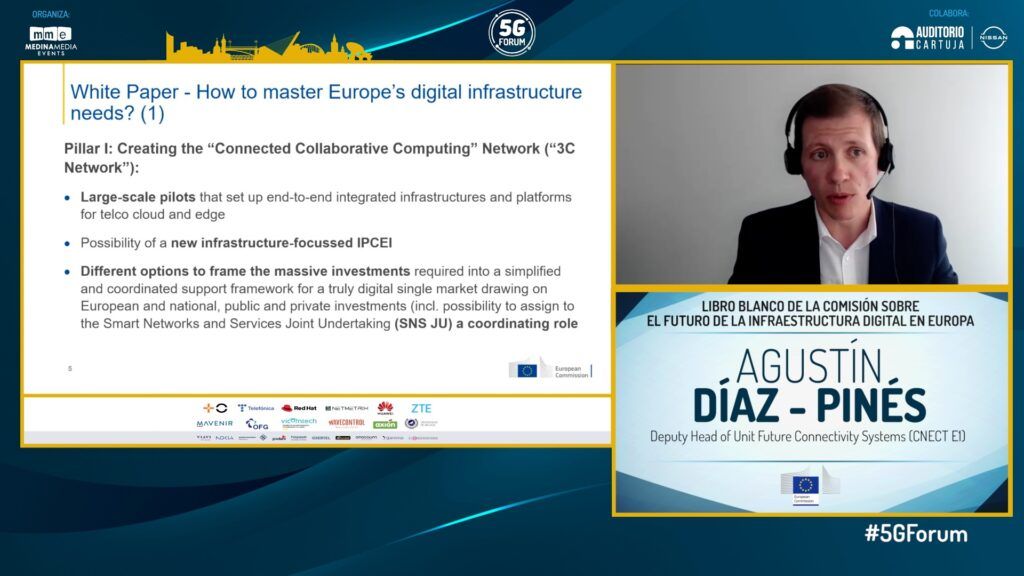
“Submarine cables are the basis of intercontinental connectivity”, said Agustín Díaz-Pinés, who offered a categorical fact: “99% of Europe’s intercontinental connectivity is based on submarine cables”. Although they are little known, connectivity between different countries in Europe and different regions in the rest of the world depends on these cables that project kilometers under the seabed. Therefore, there is a need to identify if these submarine cables fail or if several fail at once, as repairing them is very complex. “It is important that there is an awareness of the importance of these infrastructures.” Here enters the role of Spain on these infrastructures, very “relevant at European level due to the large number of kilometers of coastline” with which the Iberian Peninsula counts.
“6G will be a sustainable network based on native AI.”
Carles Antón-Haro, Board Member of the 6G Industry Association (6G-IA), Chair of the 6G-IA Test Working Group and Director of European Programs and Industry Contracts at the Centre Tecnològic de Telecomunicacions de Catalunya (CTTC), outlined the R&D roadmap for a more sustainable network and service for the future 6G, within the cooperation strategy between the European Union and the United States for the development of future 6G networks, a commitment that has been expressed in a document containing a set of “strategic reflections and recommendations”, which identifies opportunities for collaboration and becomes the “starting point for the development of a 6G service” that will revolutionize the telecommunications sector.
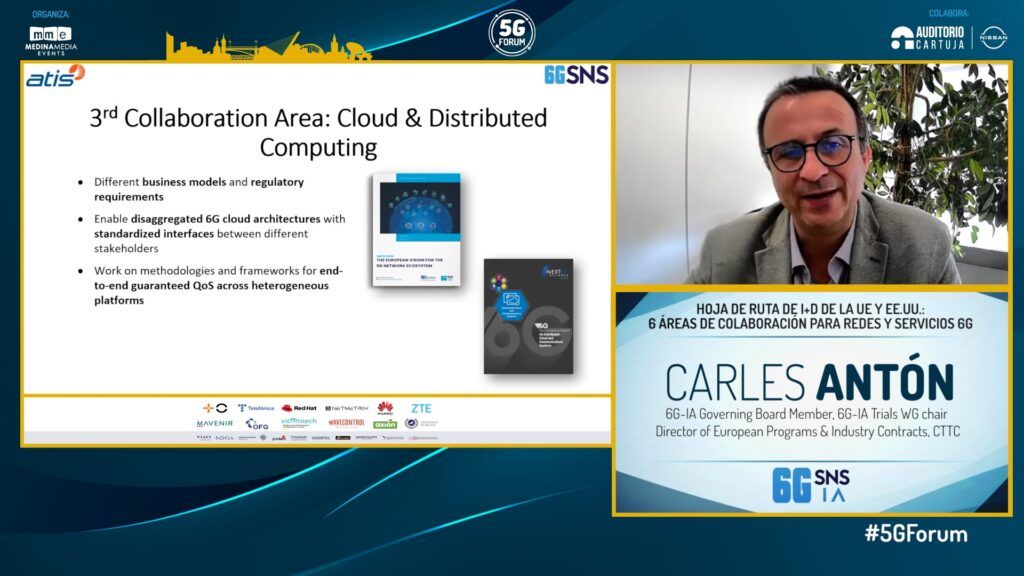
“The goal of the future 6G is not only to improve performance, but to make it more sustainable,” Antón-Haro stressed. In his view, “the 6G is going to be a network where everything is going to be facilitated by Artificial Intelligence natively, that is, it will be a whole network based on AI” which will lead to work in several areas of collaboration with special attention to sustainability from the broadest point of view. “The goal is not only to improve performance, but to make it more sustainable” throughout the entire cycle, added Carles Antón-Haro, who pointed out as objectives of this alliance “to expand existing cooperation in 6G R&D between US and EU funding agencies, align interests in global regulatory and standardization bodies, and cooperate in technology trials and pilots.”
5G-EMERGE, a hybrid network ecosystem based on 5G
Elena Puigrefagut, Senior Project Manager at the European Broadcasting Union (EBU), developed everything related to 5G-EMERGE, “a hybrid network ecosystem based on 5G and centered on satellites optimized for media distribution”. It is a project led by the EBU (European Broadcasting Union), mostly funded by ESA, the European Space Agency, under its ARTES program, which aims to “enable service providers to deliver video streaming services at scale and cost-effectively, while enhancing the user experience across a wide range of use cases.” It is an “innovative project in which the industry is driven in a more global way, with lower costs and the ability to reach all users for free” and was presented at the NAB Show 2024 held in Las Vegas.
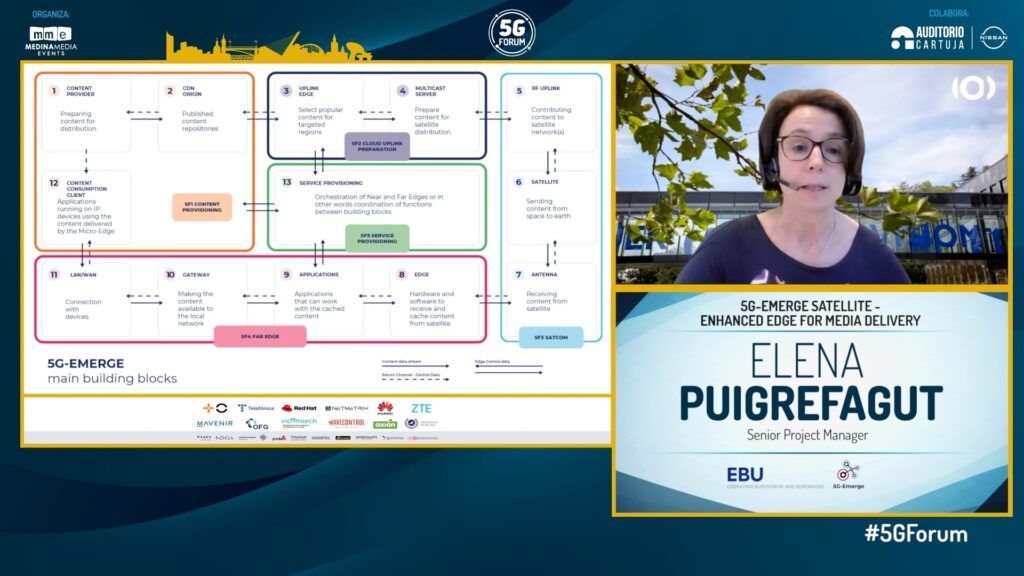
Pioneer test in UHD via 5G Broadcast
The fourth day dedicated an important block to give visibility to the worldwide pioneering experiment by the association UHD Spain, which managed to make a test broadcast in 5G using, among other technologies, the 5G Broadcast. UHD Spain, an association that brings together 39 companies related to the audiovisual industry, works in the advancement and implementation of Ultra High Definition in Spain. With this pioneering test, the association wanted to “see the possibility of combining the acronyms UHD and 5G because we wanted to see how far we could go to make an end-to-end workflow,” in the words of Miguel Angel Cristobal, director of SAPEC and main promoter of this novel idea.
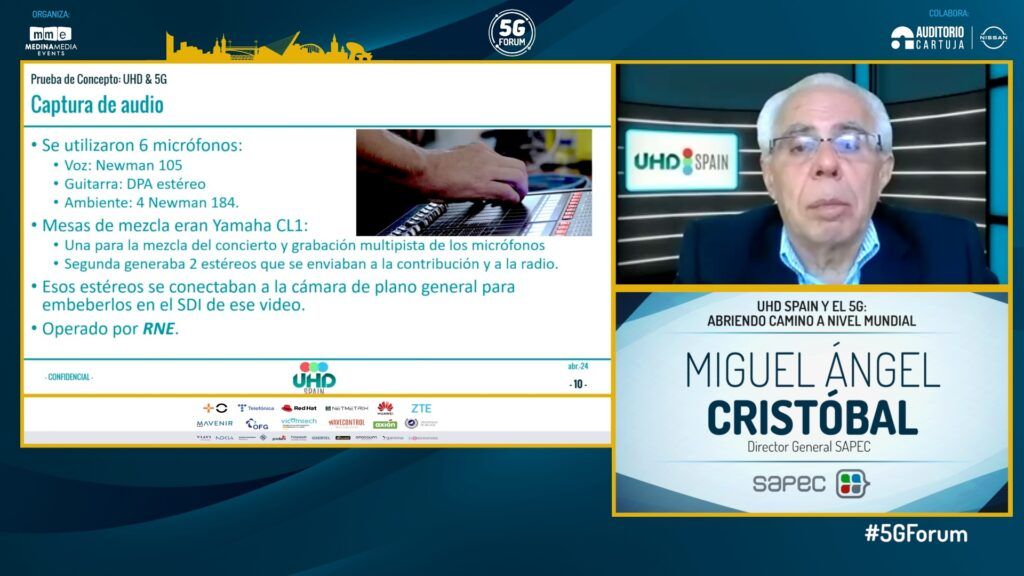
The test, which was the broadcast of a live concert by singer Israel Fernandez held at the Royal Astronomical Observatory of Madrid, “aimed to assemble a workflow in UHD with HDR-HLG from the camera to the user’s device, using various broadcast media and technologies such as 5G, processing on the ‘edge’ and in the cloud, and all available broadcast media: DTT (DVB-T2), satellite (DVB-S2), Internet (OTT, HbbTV) and the new 5G Broadcast system, with sound with Dolby Atmos technology simultaneously,” explained Miguel Ángel Cristóbal, who stressed that “5G was in all sections, from the cameras, which had no wiring, to 5G Broadcast technology, a specific case of 5G that allows multicast broadcasting to save bandwidth in the broadcast of audiovisual content.”
“We have been pioneers in doing this kind of tests,” said Pere Vila, director of RTVE Technology Strategy and president of UHD Spain, who described this pilot test as “interesting and successful”. “It works and it will be very easy to use, but it has to be tested,” said Vila, who pointed out that slicing is a fundamental aspect so that this use of 5G technology can be used on a regular basis. “I see it as useful for simple productions,” he concluded about this pioneering test, which will be followed by a “proof of concept mixing AI and UHD” that the association is already working on.
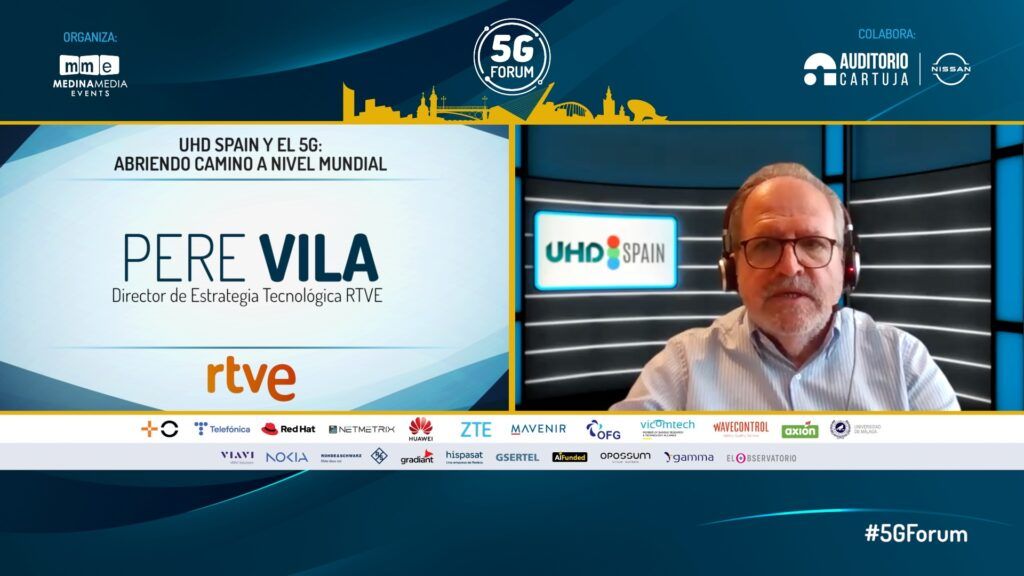
Feasibility of 5G networks for uploading UHD content
“It seemed impossible a year ago, but now we do not say it because we believe it, but because we know it”, is what Xavi Redón, Product Manager at Cellnex, said a few months ago about the 5G-UHD test, who stressed at the 5G Forum 24 that “with this test we have been able to demonstrate the viability of 5G networks for uploading Ultra High Definition content”. From his point of view, the main objective of these tests is that “this type of productions are carried out in a standardized, easy, flexible, cheap and widespread way”.
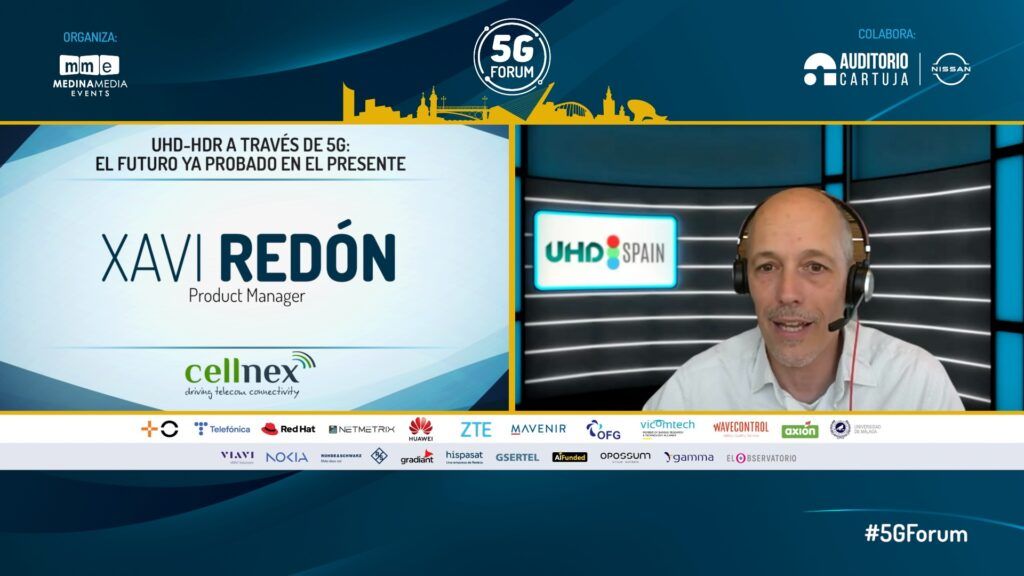
“This test helps us with UHD content productions thanks to these technological advances such as 5G and 5G Broadcast distribution that allows us to distribute the content at once so that as many users as there are in the coverage area receive it,” stressed Xavi Redón, while Emili Planas, CTO of Grup Mediapro, shared a similar view, although he pointed out that “there is still work to be done by regulators.” For the operations manager of the Mediapro audiovisual group, “the radio spectrum is not easily operable from a legal or regulatory point of view”, which becomes “a drawback because it makes it impossible to use even if the technology is available”.
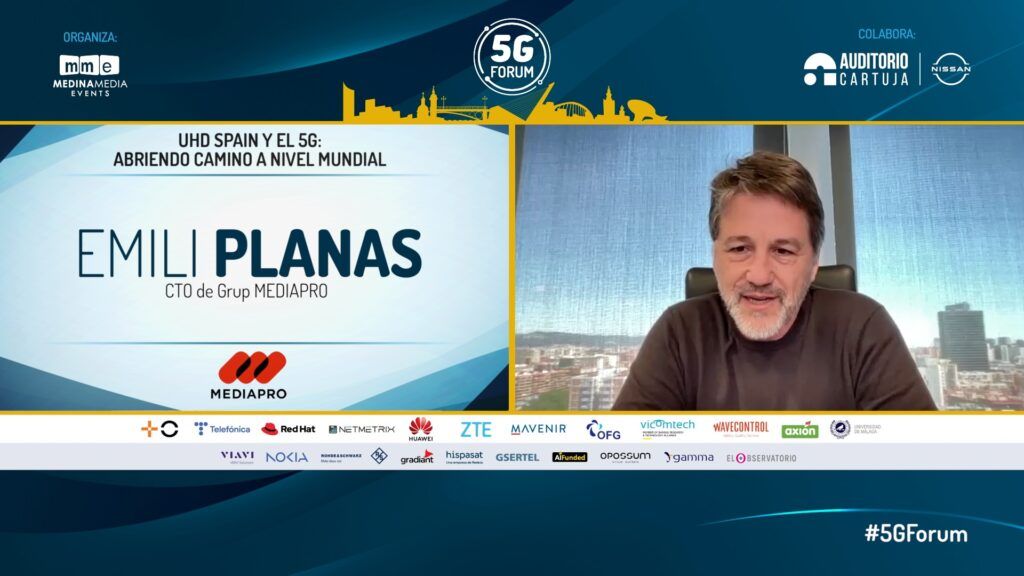
“If the regulations do not change, it will not be possible to use it or, at least, it will not be possible to use it in an operational or industrializable way,” said Emili Planas, for whom, from the point of view of the concept, the use of 5G technology combined with Ultra High Definition “is feasible” and the operational advance that means being able to “save the pulling of cables”.
5G capable of supporting ultra-high quality signals such as UHD-HDR
From a more technical point of view, the CANON company provided the four cameras that were used for the recording of this “enriching” test, in the words of Carlos Castán, Sales Manager at CANON, for whom the great challenge was in the broadcasting part, since “a very high video quality was transmitted to make a video streaming and a remote realization with UHD-HDR signals, so a large bandwidth was needed“.
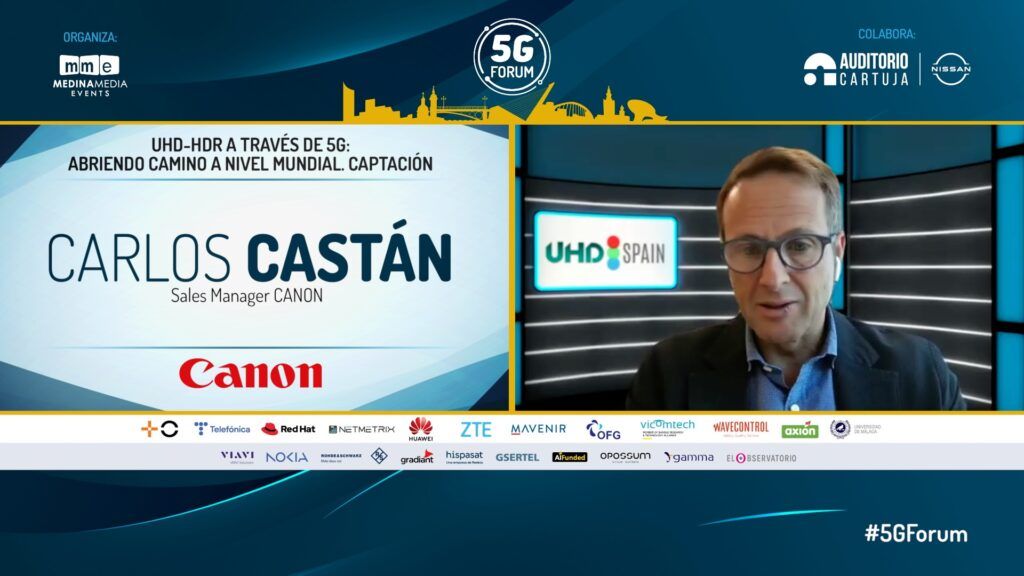
“We needed to check that this 5G connection was stable and could assume this realization with the bandwidth we had available”, highlighted Carlos Castán, while stressing that “at a business level, working in this way gives us a lot of information to manage or design future product launches or see where the market is going”.
A meeting with great repercussion in the sector and in the media.
The 5G Forum has established itself as a reference forum in the technology sector, as it is a unique showcase with a multidisciplinary vocation to publicize each year the use cases and success stories of operators, companies, universities and institutions. International, national, regional and local media have reported on this seventh edition: Canal Sur, Europa Press, Agencia EFE, ABC, Diario de Sevilla, La Razón, La Vanguardia, Cadena SER, Radio Intereconomía, El Correo, etc.
Today, Friday, May 10, the fifth and last day, the third virtual one, of the 5G Forum 24 will be held, in which cybersecurity and AI in the 5G network will be discussed in full. The day will feature a select agenda of speakers who will delve into and offer the keys to everything that concerns the world of security in 5G networks and the future 6G.
All the presentations of this and previous editions can be viewed through ‘The Observatory’, the digital platform of Medina Media Events, where all the interventions will be available 24/365 for on-demand consumption, like Netflix, but free of charge.
The seventh edition of the 5G Forum is organized by Medina Media Events and is supported by MASORANGE, Telefónica, Red Hat, Netmetrix, Huawei, ZTE, Mavenir, OFG, Vicomtech, Wavecontrol, Axión, the University of Málaga, Viavi Solutions, Nokia, Rohde & Schwarz, Gradiant, Hispasat, Gsertel, AI Funded, Opossum and Gamma Solutions, among others.